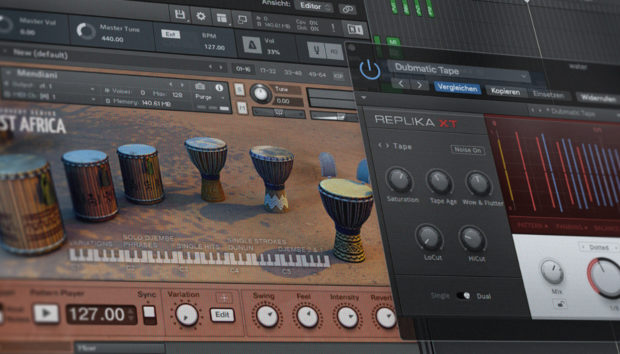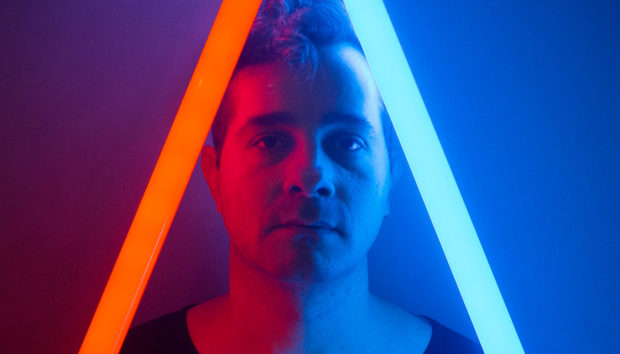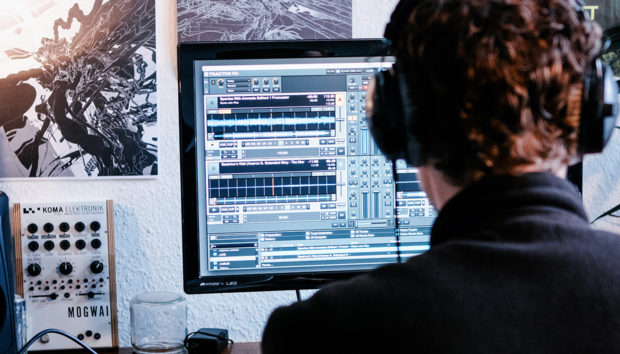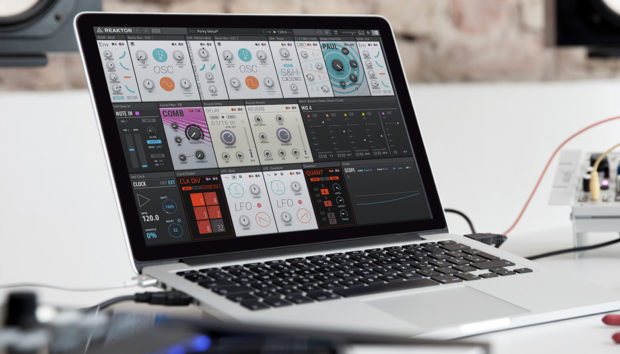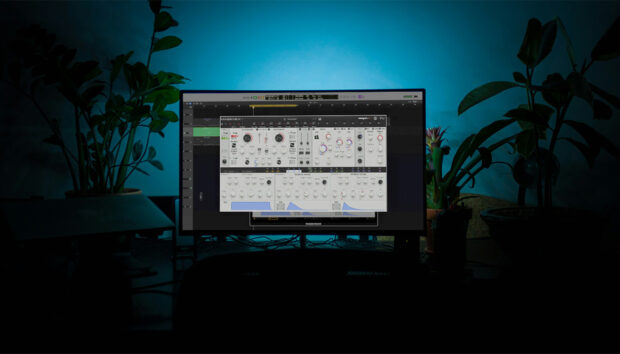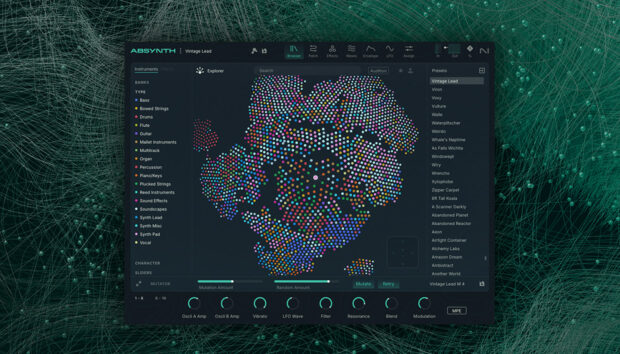Niki Sadeki’s productions have always balanced precision with emotion, and her latest release, Fading Sun on Manual Music, captures that balance perfectly.
The title track pairs her textured production with Rubina’s vocal performance, while Morning Star moves deeper into progressive territory with an understated melodic drive. Alongside the release, Niki breaks down how Battery has become central to her drum programming, from custom kits to resampling tricks that keep her workflow flexible and inspiring.
Jump to these sections:
- Why Niki avoids templates when starting tracks
- How custom Battery kits speed up her workflow
- Techniques for making old kits feel new
- The subtle drum details that define her sound
- How her drum sound has evolved over time
- The kit that’s become her creative anchor
Let’s get into the details on why Niki Sadeki starts from scratch as a way to keep her connected to her ideas in the studio.
Niki’s also offered some of her unique Battery samples in a free kit below.
When you’re starting a new track, do you typically start with a template or build fresh each time?
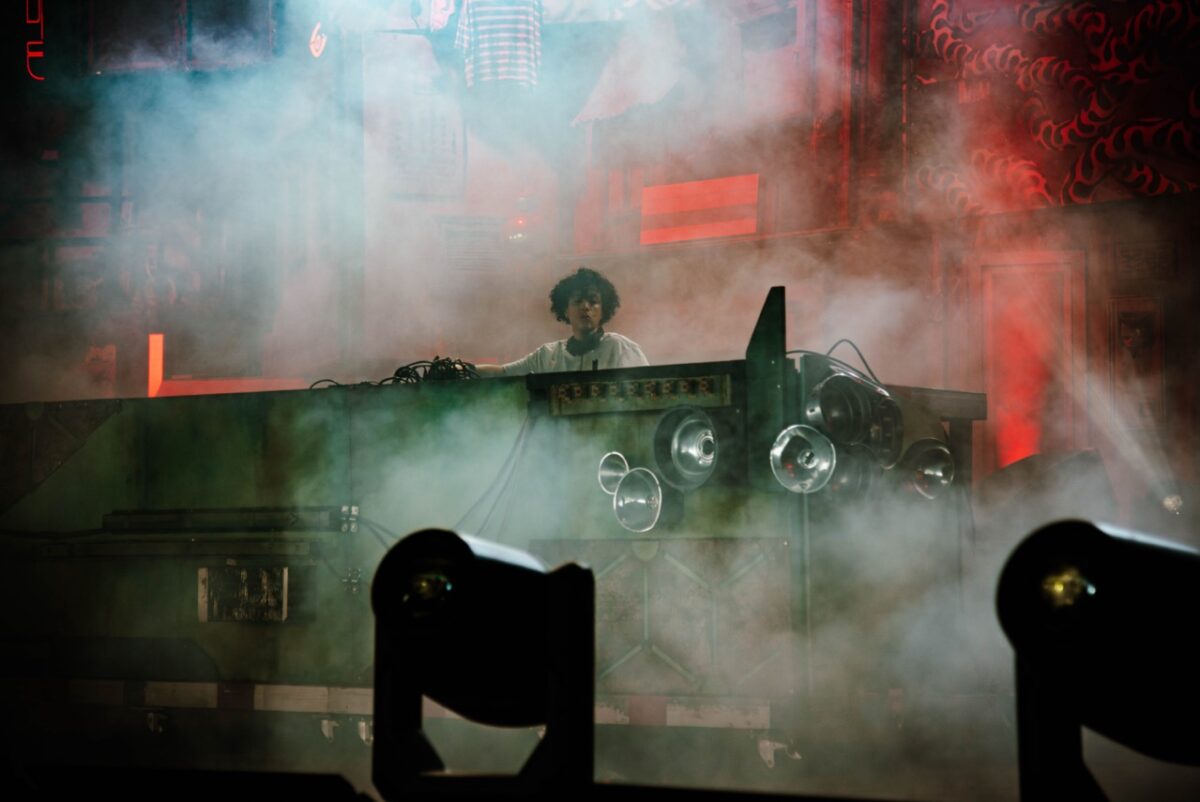
I almost always start fresh. For me, part of the magic in creating music lies in allowing the mood, emotion, or inspiration of that particular moment to guide the process.
I find that using templates can sometimes pull me into old patterns or predefined structures, and I like to leave room for experimentation, even if it means taking a less efficient route. Building from scratch allows me to stay present with the sounds I’m selecting and how they interact, which helps me stay connected to the story I’m trying to tell in the music.
That said, I do have a few saved channel strip presets and favorite effects chains in Ableton that I reach for when I need to move quickly or stay in a flow state. They’re more like building blocks rather than a fixed starting point. I think that balance between structure and spontaneity is what keeps things both grounded and alive for me.
Pro tip from Niki Sadeki: Map Battery parameters like sample pitch or filter cutoff to Ableton’s Macro controls using an Instrument Rack. It gives you hands-on control over shaping your kits in real time, whether performing or fine-tuning a mix.
Do you ever save drum kits and packs in Battery to speed up your workflow in later sessions and tracks?
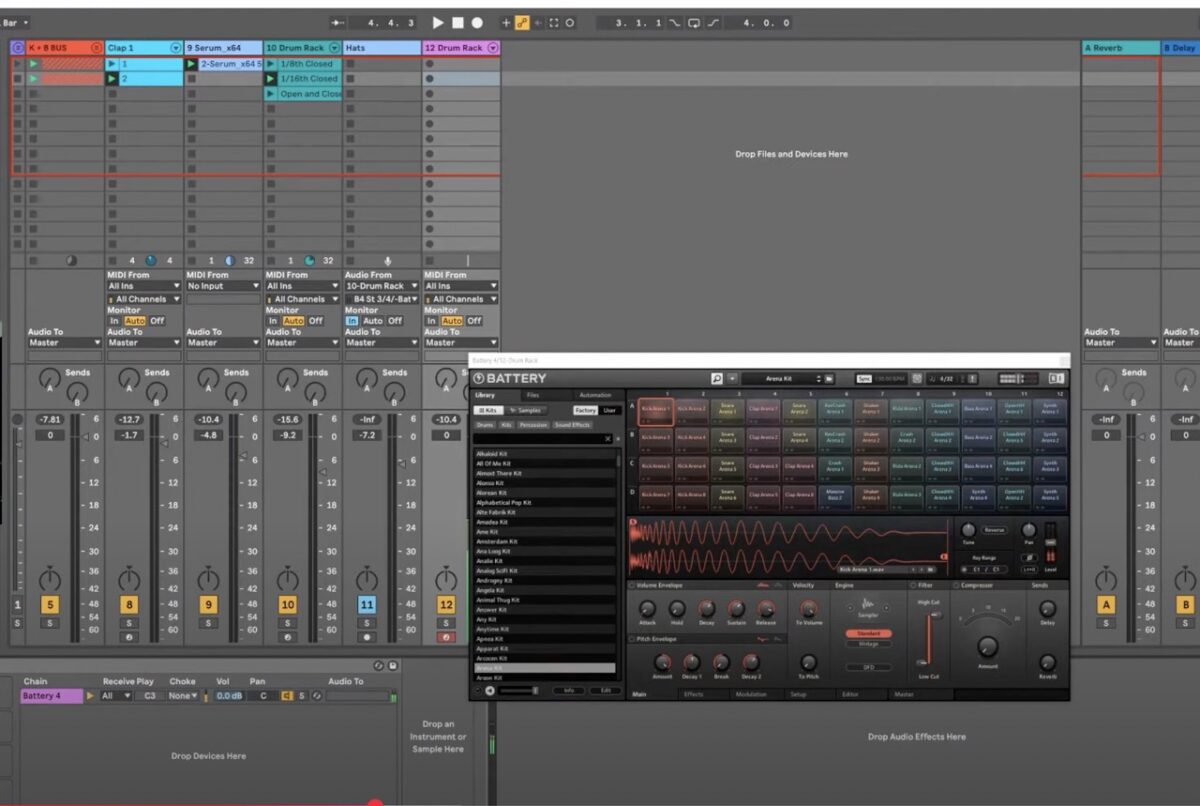
Absolutely.
I’ve built a few custom kits in Battery over time that act as my personal “go-to” palettes, especially for when I’m on a tight deadline or just trying to capture an idea quickly before it slips away. These kits often evolve from earlier sessions and are made up of carefully selected samples that already sit well in my mixes and feel right in my sonic world.
Still, I try not to rely too heavily on the same kits for too long. I’ll save iterations with different processing or layering approaches, so even if I’m using a familiar core, it feels fresh in each session. Battery makes it super easy to stay organized while also being flexible enough to explore different directions when inspiration strikes.
Pro tip from Niki Sadeki: Combine Battery’s kits with your DAW’s saturation or distortion devices to create tonal contrast. Use parallel processing to preserve dynamics while adding grit or width in a controlled way.
What’s your go-to method for making a familiar kit and sample pack in Battery you’ve used countless times feel new again?
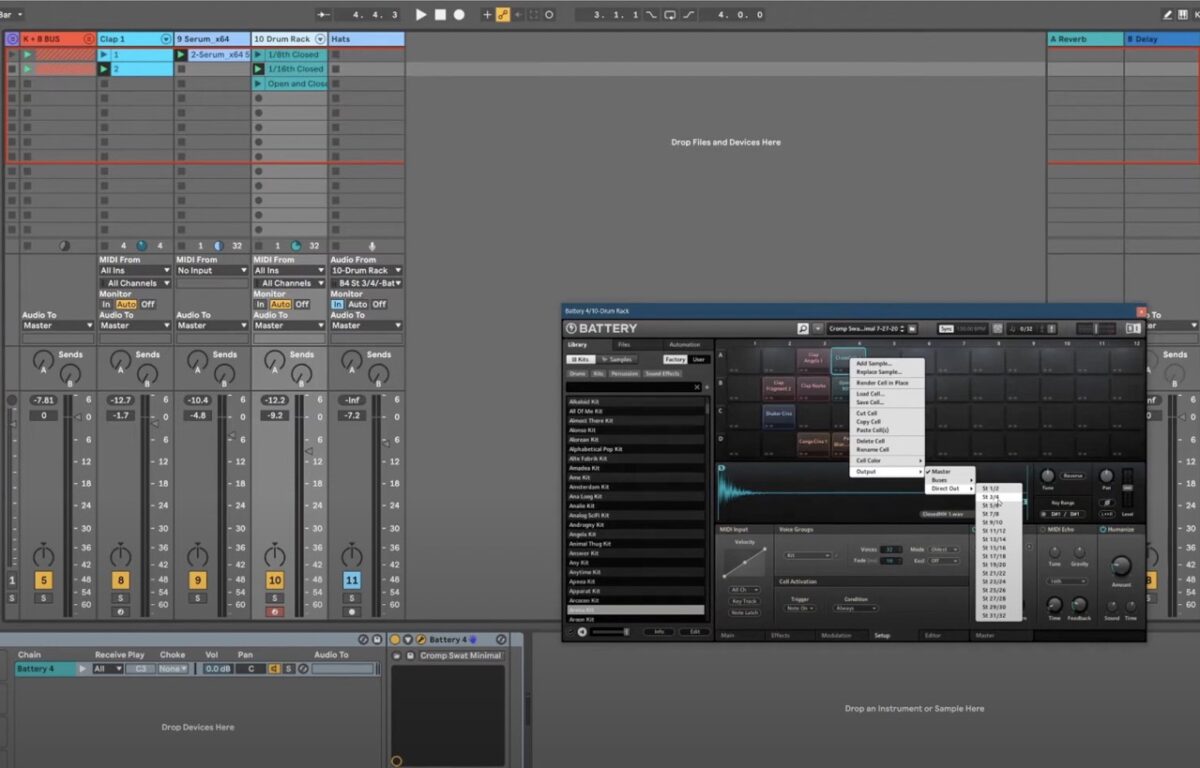
One of my favorite tricks is to recontextualize the sounds by layering them with field recordings or analog textures – something with character or imperfection. I’ll often resample the Battery output and chop it again in Ableton, applying saturation, granular processing, or time-based effects to create entirely new rhythmic elements. Sometimes just flipping the pitch or envelope of a single hit can completely reshape the energy of a groove.
Another method is to reassign familiar samples to different MIDI notes or triggers, almost like remixing the kit structure itself. That subtle shift forces me to approach the rhythms with a new mindset, and it often leads to grooves I wouldn’t have come up with otherwise. It’s those small disruptions in habit that keep my process creative.
Pro tip from Niki Sadeki: If you’re using Ableton, use the Groove Pool to humanize your Battery sequences. Just drag a groove template onto the MIDI clip where your Battery kit is triggered. It instantly adds swing, timing shifts, and more life to your beats.
Is there a through-line in your kits in Battery that listeners might not catch but that you hear as a kind of signature?
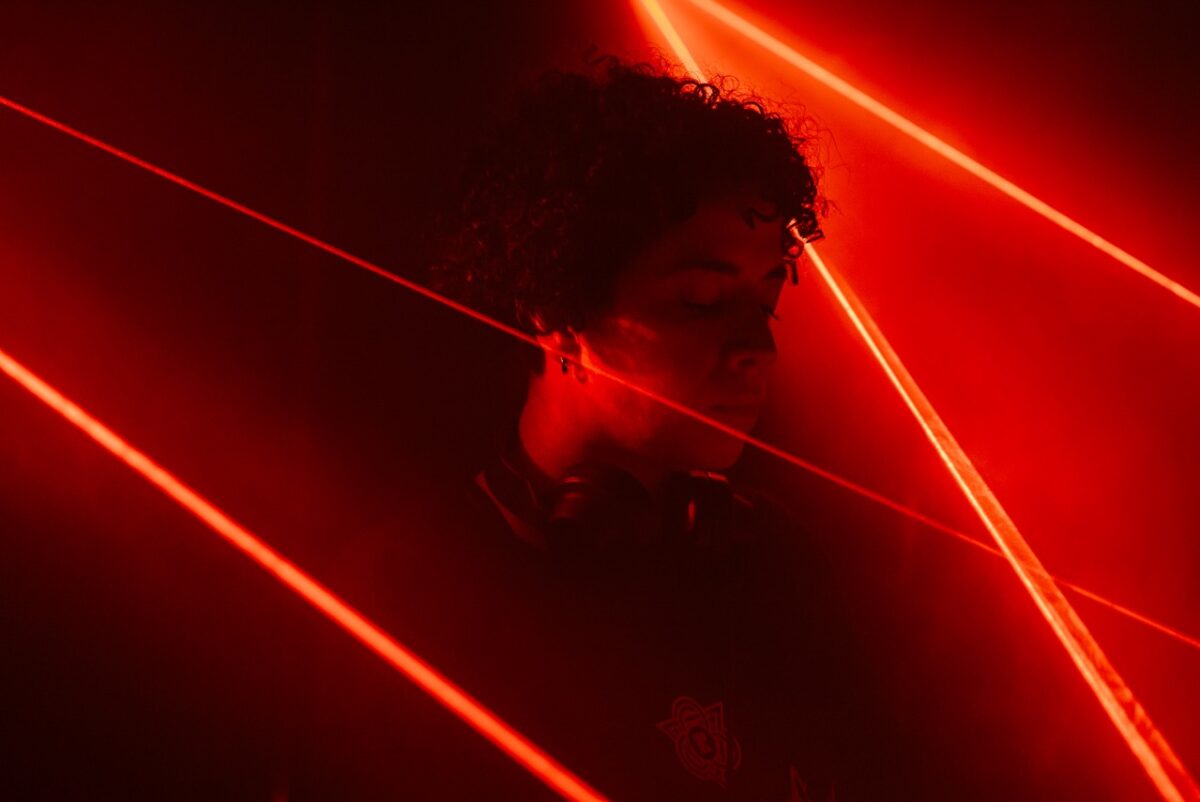
Yes, definitely.
I have a deep love for contrast and emotional depth in rhythm, and that often comes through in the way I balance punchy low-end elements with delicate, high-frequency details. I tend to gravitate toward organic, textured percussion – things like dusty rimshots, vinyl hiss, or lightly processed foley – which I’ll often layer into otherwise clean digital hits. It creates a kind of push and pull between grit and clarity that I think has become part of my sound.
Another subtle signature is the use of ghost notes or barely-there rhythmic embellishments. They’re often tucked low in the mix, but they add movement and emotion in a way that isn’t always immediately noticeable. I think of them almost like brushstrokes in a painting. They’re intimate details that reward close listening.
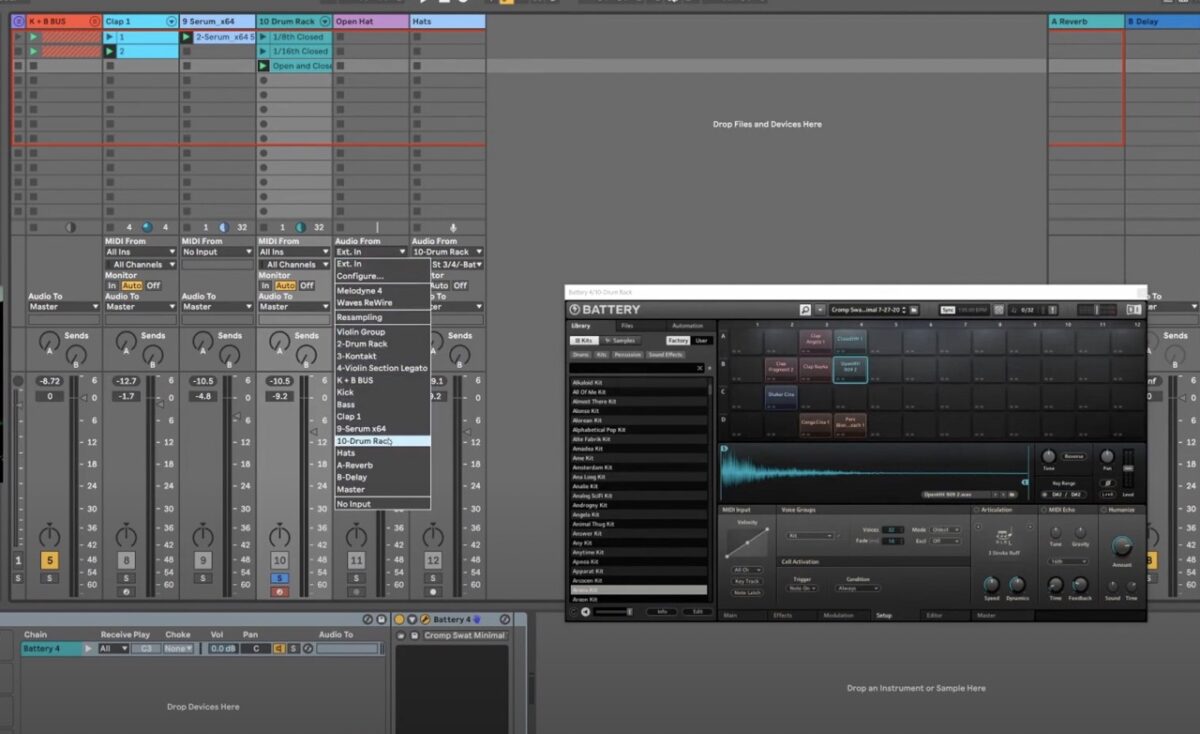
Pro tip from Niki Sadeki: Save your processed Battery kits in your DAW. That way, you can recall not just the kit, but any chains of effects, macros, or sidechain setups you’ve built around it.
When you look back at your older tracks, what do you notice about the drum work compared to now?
When I listen to my older productions, I hear a lot of intuition but also a lot of room for growth in the drum programming. Back then, I was more focused on getting a feeling across than on the technical finesse of how the drums sat in the mix or interacted with the groove.
There was charm in the looseness, but I’ve become much more intentional in the way I shape rhythm now.
Over time, I’ve developed a stronger sense of space and tension in drum work – how silence, decay, or even restraint can make a rhythm more compelling. I’ve also gotten better at listening for the emotional tone of percussive elements, not just their sonic characteristics. That shift in perspective has made a big difference in how I construct and deconstruct rhythmic ideas in my current music.
Pro tip from Niki Sadeki: Resample your Battery drum patterns inside your DAW by routing them to an audio track and recording a few bars live. Then slice that audio into a new MIDI track like Drum Rack. This gives you fresh, unexpected patterns while staying inside your session.
Is there a specific Battery kit or preset that’s made it into more of your tracks than any other?
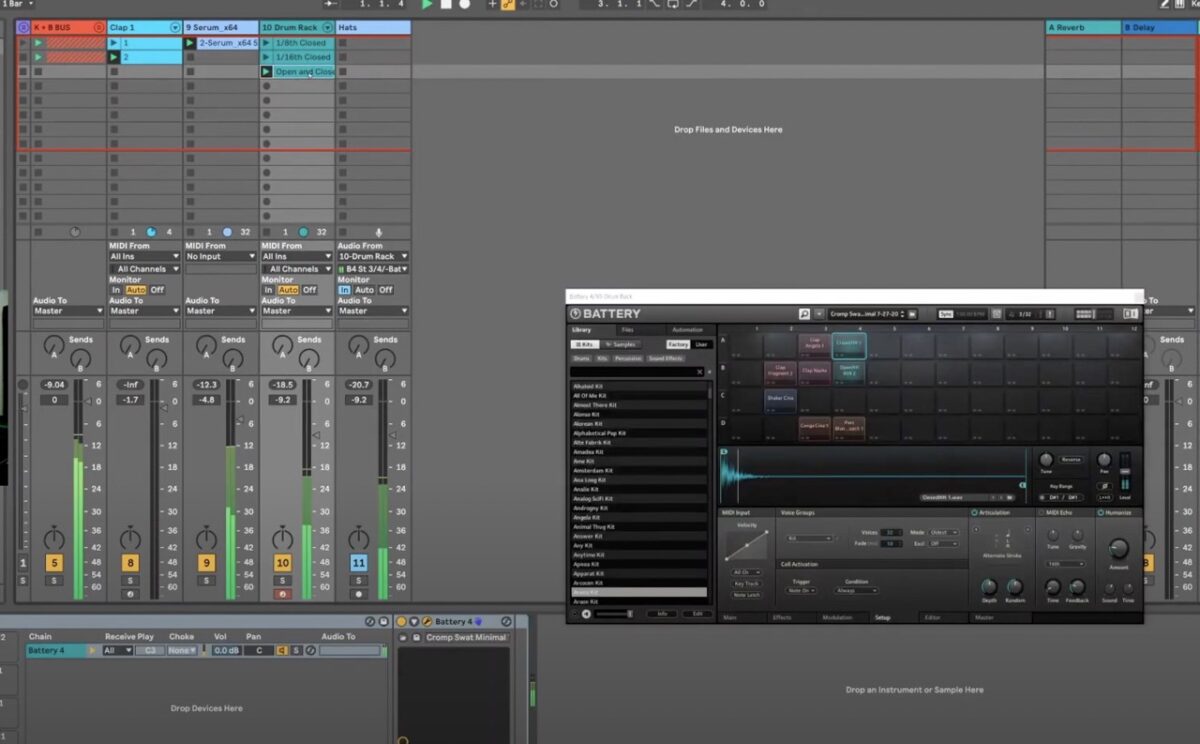
There’s one custom kit I built from scratch a few years ago that I keep coming back to. It’s centered around a tight, woody kick, some warm analog claps, and a few handpicked textures I recorded during a trip, like sand being brushed across stone and the clicking of a lighter. I’ve reshaped and reprocessed it so many times that it barely resembles the original anymore, but the core feel is still there. It feels personal, like a little sonic fingerprint.
While I love exploring new kits and presets, that particular one has a groundedness that I can rely on. Sometimes when I’m lost in a session or overwhelmed with too many choices, returning to that kit brings me back to center. It’s like a creative anchor that helps me refocus and move forward with clarity.
Pro tip from Niki Sadeki: When starting a track in Ableton Live, try loading Battery onto a blank MIDI track and pair it with a simple Drum Rack channel just for texture or layering. This setup keeps your workflow flexible and your drum sounds diverse right from the start.
Wrapping it all up
Talking through her process reveals how much intention drives Niki’s approach. From building fresh sessions instead of leaning on templates to constantly reshaping her favorite kits in Battery, every decision reflects a focus on staying connected to the energy of the track in front of her.
That mindset is what gives her music its identity while keeping her workflow adaptable enough to meet the demands of both experimentation and tight deadlines.
With Fading Sun out now on Manual Music, it is clear that Niki’s ability to merge detail-driven programming with an instinctive feel for rhythm is only growing stronger. Her insights on Battery offer a practical window into how tools can become an extension of an artist’s voice.
Thanks to Niki for taking the time to break down her process and for sharing a look at how she keeps her sound moving in the right direction.
